Abstract
Data collection including checking the problem list and analyzing the etiology cannot be overemphasized in full mouth rehabilitation cases. It is well reported that favorable prognosis of prosthodontic treatment depends on accurate diagnosis. Seventy seven year old female patient presented with chief complaints of chewing pain on maxillary and mandibular left premolars and unesthetic existing prosthesis. Clinical evaluation, radiographic examination and cast analysis were performed to gather comprehensive data and problem lists. Treatment planning was based on collected data and related articles. Abutment evaluation, prognosis depending on various types of prosthesis, and maintenance were considered as well. Occlusal vertical dimension was increased to solve esthetic dissatisfaction and insufficient interocclusal space. Patient adaptation was verified with provisional restorations followed by diagnostic wax up. Function, esthetics and occlusal stability were verified during 8 week follow-up period. Prosthodontic reconstruction based on systemic analysis, diagnosis, and treatment plan led to satisfactory result after delivery of definitive prosthesis. (J Korean Acad Prosthodont 2013;51:332-8)
Go to : 
REFERENCES
1.Stockstill JW., Bowley JF., Attanasio R. Clinical decision analysis in fixed prosthodontics. Dent Clin North Am. 1992. 36:569–80.
2.Fayz F., Eslami A. Determination of occlusal vertical dimension: a literature review. J Prosthet Dent. 1988. 59:321–3.

4.Niswonger ME. The rest position of the mandible and the centric relation. JADA. 1934. 21:1572–82.
5.Niswonger ME. Obtaining the vertical relation in edentulous cases that existed prior to extraction. JADA. 1938. 25:1842–7.

6.Atwood DA. A cephalometric study of the clinical rest position of the mandible: Part I. The variability of the clinical rest position following the removal of occlusal contacts. J Prosthet Dent. 1956. 6:504–19.
7.Hemmings KW., Howlett JA., Woodley NJ., Griffiths BM. Partial dentures for patients with advanced tooth wear. Dent Update. 1995. 22:52–9.
8.Ibbetson RJ., Setchell DJ. Treatment of the worn dentition: 2. Dent Update. 1989. 16:300–2. 305–7.
9.Turner KA., Missirlian DM. Restoration of the extremely worn dentition. J Prosthet Dent. 1984. 52:467–74.

11.Hull CA., Junghans JA. A cephalometric approach to establishing the facial vertical dimension. J Prosthet Dent. 1968. 20:37–42.

12.Willis FM. Features of the face involved in full denture prosthesis. Dent Cosmos. 1935. 77:851–4.
13.Grossmann Y., Sadan A. The prosthodontic concept of crown-to-root ratio: a review of the literature. J Prosthet Dent. 2005. 93:559–62. 1987.

14.Fayz F., Eslami A., Graser GN. Use of anterior teeth measurements in determining occlusal vertical dimension. J Prosthet Dent. 1987. 58:317–22.

15.Avila G., Galindo-Moreno P., Soehren S., Misch CE., Morelli T., Wang HL. A novel decision-making process for tooth retention or extraction. J Periodontol. 2009. 80:476–91.

16.Shillingburg H., Shillingburg HT. Fundamentals of fixed prosthodontics. 3rd ed.Chicago, IL: Quintessence Publishing Co.;1997. p. 100–2.
Go to : 
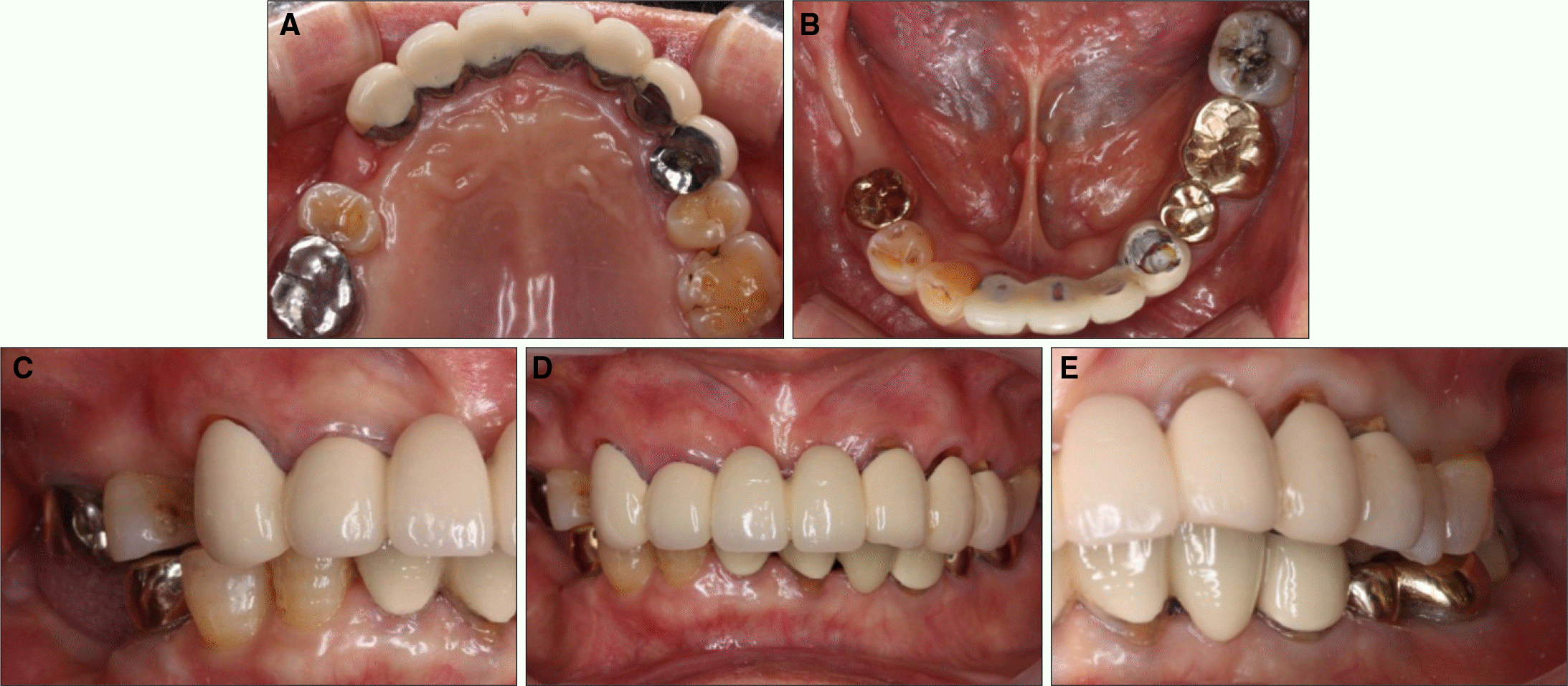 | Fig. 1.Pre-operative intraoral photographs. A: Maxillary occlusal view, B: Mandibular occlusal view, C: Right lateral view, D: Frontal view, E: Left lateral view. |
 | Fig. 3.CR-MICP discrepancy. A: 0.5 mm lateral discrepancy on frontal view, B: 0.5 mm anterio-posterior discrepancy on lateral view (interrupted line: CR, solid line: MICP). |
 | Fig. 5.Measurement of Freeway space. A: Vertical dimension at rest, B: Vertical dimension at occlusion. |
 | Fig. 6.Cephalometric radiograph analysis. A: ideal upper and left facial proportions suggested by Hull11; 43%, 67% each, B: actual upper and left facial proportions of patient; 46.7%, 53.3% each. |
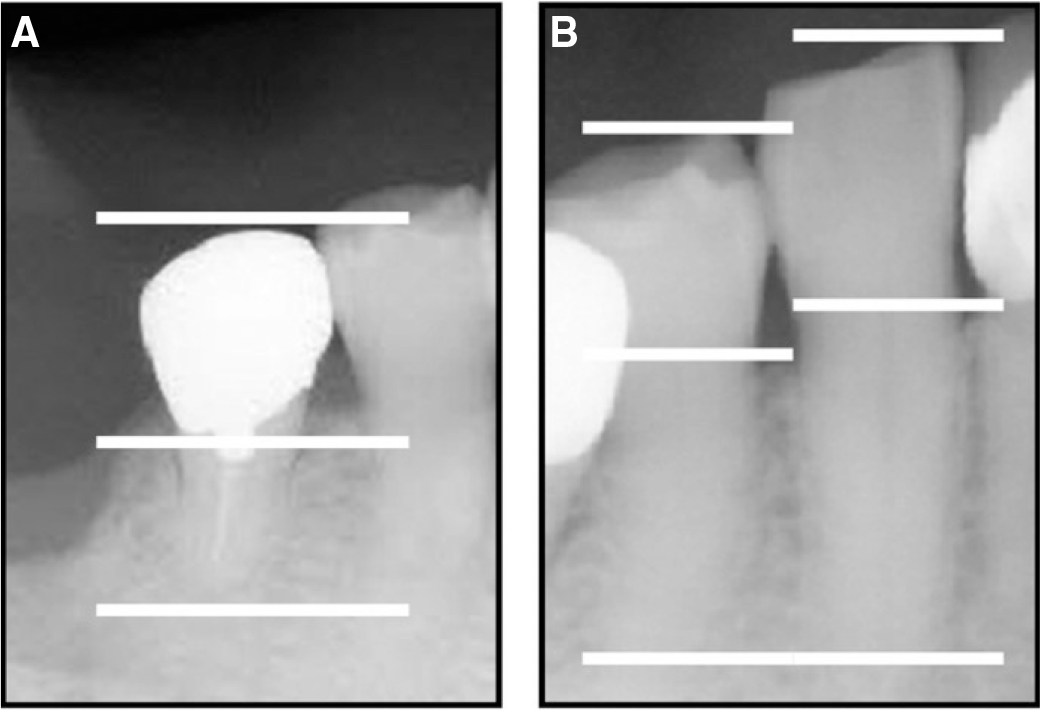 | Fig. 7.Abutment evaluation; crown to root ratio. A: 1:1 on right lower second premolar, B: 1:1.3 on right lower first premolar, 1:1.7 on right lower canine. |




 PDF
PDF ePub
ePub Citation
Citation Print
Print


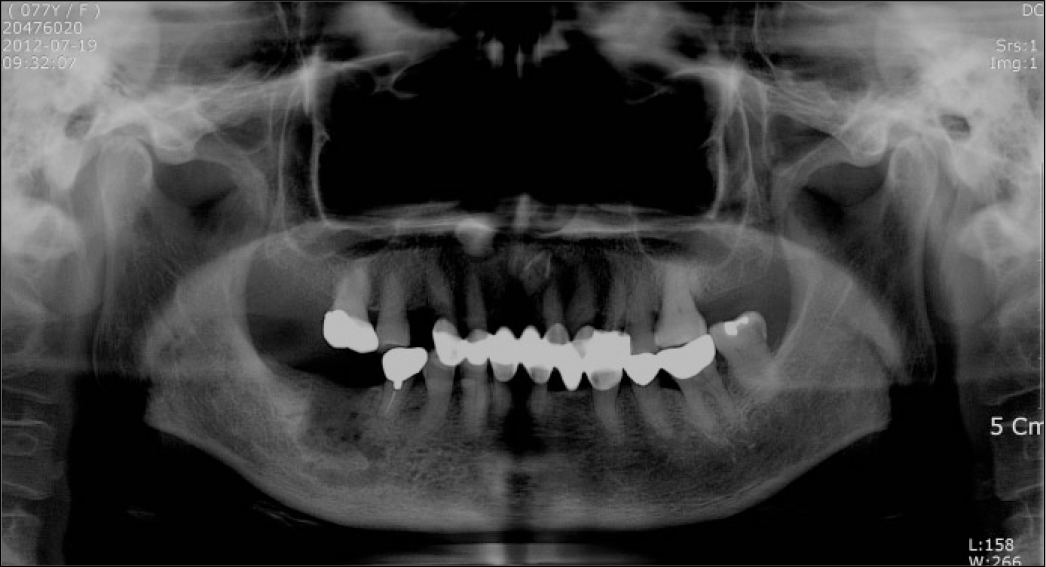
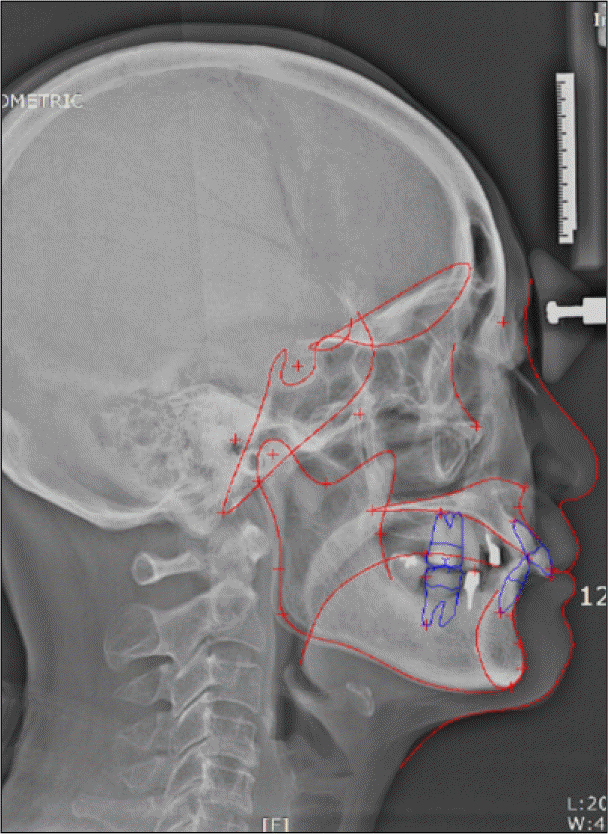
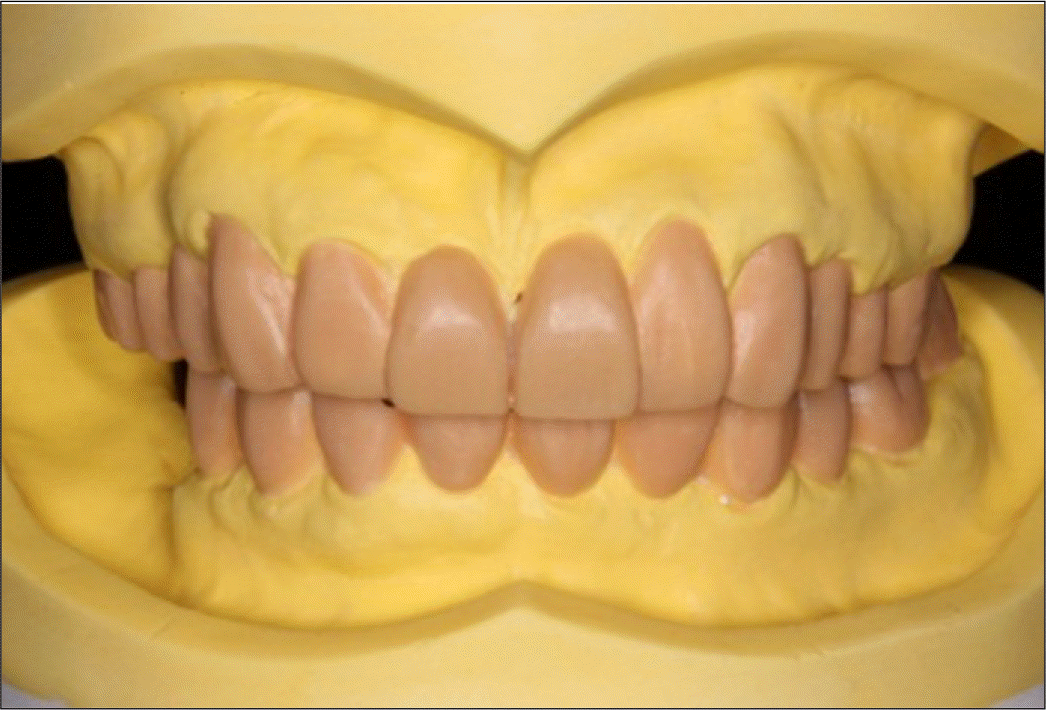


 XML Download
XML Download